Solar power helps Waterloo Church to victory over energy bills
 A Church built to celebrate the British victory at the Battle of Waterloo is now generating its own power thanks to solar panels.
A Church built to celebrate the British victory at the Battle of Waterloo is now generating its own power thanks to solar panels.
St Andrew’s Church was built in the 1830s as one of the famous Waterloo Churches – built using money granted by the Government to mark the defeat of Napoleon.
Read more: Solar power helps Waterloo Church to victory over energy bills
About Access is building a history of helping properties to operate safely
 About Access is now established as the perfect partner for organisations who want to make sure their historic sites don’t become tourist traps.
About Access is now established as the perfect partner for organisations who want to make sure their historic sites don’t become tourist traps.
Based in Yorkshire and operating nationwide, the company has developed an impressive portfolio of work with churches, castles, stately homes and other heritage properties to help them look after their visitors and staff – and to make sure they keep within the law.
Read more: About Access is building a history of helping properties to operate safely
Two new products launched by Chris Topp & Co
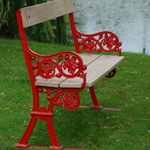 Chris Topp & Co are best known as leaders in this country of heritage iron work restoration – but they are keen to be recognised as designers and creators of new ironwork.
Chris Topp & Co are best known as leaders in this country of heritage iron work restoration – but they are keen to be recognised as designers and creators of new ironwork.
They have just launched a railing system - Carltonia.
The Collegiate Church of The Holy Cross and the Mother of Him Who Hung Thereon, Crediton
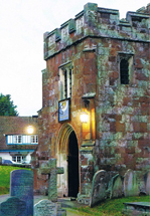 The Collegiate Church of the Holy cross and the Mother of Him Who Hung Thereon in Crediton is a building on a scale befitting what was (much earlier) a cathedral town and the birth-place of St. Boniface. The present building is mainly 15th century; a collegiate church of cruciform plan with a central tower. After neglect and degradation in the 18th century it was repaired an d restored in the 19th century by John Hayward who was one of the leading regional Victorian architects.
The Collegiate Church of the Holy cross and the Mother of Him Who Hung Thereon in Crediton is a building on a scale befitting what was (much earlier) a cathedral town and the birth-place of St. Boniface. The present building is mainly 15th century; a collegiate church of cruciform plan with a central tower. After neglect and degradation in the 18th century it was repaired an d restored in the 19th century by John Hayward who was one of the leading regional Victorian architects.
Read more: The Collegiate Church of The Holy Cross and the Mother of Him Who Hung Thereon, Crediton
New cafe for St Martin-in-the-Fields
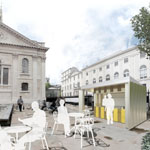 Platform 5 Architects have won planning consent for a new temporary outdoor cafe for St Martin-in-the-Fields in central London. The new kiosk is due to open April 2013. A set of images can be downloaded at http://goodfellowcommunications.dphoto.com/album/4d014h.
Platform 5 Architects have won planning consent for a new temporary outdoor cafe for St Martin-in-the-Fields in central London. The new kiosk is due to open April 2013. A set of images can be downloaded at http://goodfellowcommunications.dphoto.com/album/4d014h.
The new cafe will be sited the east courtyard of St Martin’s - one of the most sensitive sites in central London next to one of the most famous churches in the world.
Wigan Municipal Buildings
 Integrating a modern, multi-use municipal facility with a Grade II listed, historically sensitive site was never going to be a simple task. During a large-scale redevelopment of Wigan’s main civic premises, the existing and much-loved iconic terracotta street facade was retained, with Shaws of Darwen selected as a vital part of the professional team to carry out this sensitive work.
Integrating a modern, multi-use municipal facility with a Grade II listed, historically sensitive site was never going to be a simple task. During a large-scale redevelopment of Wigan’s main civic premises, the existing and much-loved iconic terracotta street facade was retained, with Shaws of Darwen selected as a vital part of the professional team to carry out this sensitive work.
The advantages of being accredited
 by M C HALL FRICS IHBC Pg Dip Cons: Historic Buildings. RICS Accredited.
by M C HALL FRICS IHBC Pg Dip Cons: Historic Buildings. RICS Accredited.
After lobbying by a group of forward thinking surveyors, accreditation was introduced for chartered surveyors as well as architects. Surveyors have now been recognised by the ecclesiastical bodies in England for about 20 years.
Chester City Walls to create leading european heritage trail
 Two thousand years of Chester’s rich and colourful history have been earmarked to create one of Europe’s finest heritage trails.
Two thousand years of Chester’s rich and colourful history have been earmarked to create one of Europe’s finest heritage trails.
Chester’s famous City Walls – the only complete circuit in the UK – have recently been given an asset value £0.5 billion….. but could well be worth much more to the city in the future.
Read more: Chester City Walls to create leading european heritage trail
Don’t replace- renovate your period windows
 Making a building more comfortable, warm and efficient is far from easy especially when you have a period property. Single Glazed windows are a major contributor to heat loss. Compensating for this is not only costly but requires more energy consumption and therefore greater carbon emissions.
Making a building more comfortable, warm and efficient is far from easy especially when you have a period property. Single Glazed windows are a major contributor to heat loss. Compensating for this is not only costly but requires more energy consumption and therefore greater carbon emissions.
Resources show heads north
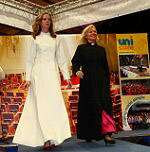 October sees the next manifestation of the CRE, the major national exhibition of everything for a church organisation: this time in Manchester. Christian Resources Exhibition North takes place at EventCity on 10-11 October and will pack into two days a wealth of events and showcases for church leaders, organisers, communicators and mission leaders. On show will be furniture, books, music and instruments, software, hardware, plate and even vestments.
October sees the next manifestation of the CRE, the major national exhibition of everything for a church organisation: this time in Manchester. Christian Resources Exhibition North takes place at EventCity on 10-11 October and will pack into two days a wealth of events and showcases for church leaders, organisers, communicators and mission leaders. On show will be furniture, books, music and instruments, software, hardware, plate and even vestments.
Authentic natural materials are less harmful to the environment...
 In every field, materials are chosen according to requirement – managers, designers, specifiers and tradesman never just blindly ignore the properties of those materials in their selection – except it seems, in the building industry. We have been suggesting for many years that traditional building materials are, by their nature, ecological.
In every field, materials are chosen according to requirement – managers, designers, specifiers and tradesman never just blindly ignore the properties of those materials in their selection – except it seems, in the building industry. We have been suggesting for many years that traditional building materials are, by their nature, ecological.
Read more: Authentic natural materials are less harmful to the environment...
Woodexperts integral to windmill’s longevity
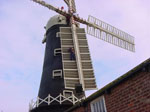 Skidby Windmill, situated near to Beverley in the East Riding of Yorkshire, is said to be England’s most northerly working windmill, and the only one north of the Humber. About 25 years ago, there was a near-fatal catastrophe, when one of the sail beams broke off during milling, on a Bank Holiday afternoon, and crashed through the roof of the adjoining building, which was full of tourists!
Skidby Windmill, situated near to Beverley in the East Riding of Yorkshire, is said to be England’s most northerly working windmill, and the only one north of the Humber. About 25 years ago, there was a near-fatal catastrophe, when one of the sail beams broke off during milling, on a Bank Holiday afternoon, and crashed through the roof of the adjoining building, which was full of tourists!
Historic village church has heaters powered from underground LPG tank
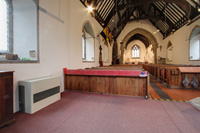 St Peter’s in Hixon, Staffordshire is a Grade 2 listed rural church dating from 1849. It was designed by the renowned Victorian architect Gilbert Scott and is part of the Mid-Trent diocese.
St Peter’s in Hixon, Staffordshire is a Grade 2 listed rural church dating from 1849. It was designed by the renowned Victorian architect Gilbert Scott and is part of the Mid-Trent diocese.
As part of a major refurbishment programme, DRU has supplied Kamara powered flue gas wall heaters, replacing old and inefficient overhead electric heaters.
Read more: Historic village church has heaters powered from underground LPG tank













